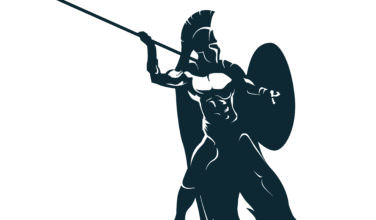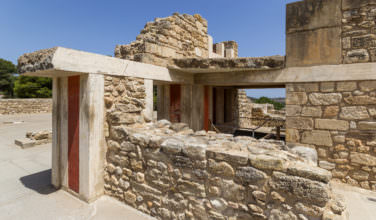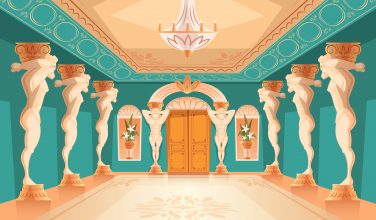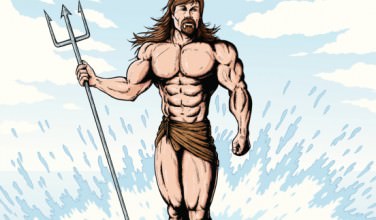About Asteria – Titan Goddess of the Stars
Comments Off on About Asteria – Titan Goddess of the Stars
 In Greek mythology, there are a myriad of gods and goddesses. We are very familiar with the Olympian gods and goddesses, but there were others who were also worshipped on a regular basis. Asteria, the Titan goddess of shooting stars, dream divination, and astrology, was one of these. Here’s more information about her:
In Greek mythology, there are a myriad of gods and goddesses. We are very familiar with the Olympian gods and goddesses, but there were others who were also worshipped on a regular basis. Asteria, the Titan goddess of shooting stars, dream divination, and astrology, was one of these. Here’s more information about her:
Early Origins and History of Asteria
In the Greek stories, Asteria is portrayed as the daughter of the Titans, Coeus and Phoebe. Her siblings were Leto and Lelantos. She was born into the Golden Age when the Titans ruled the cosmos under the reign of Cronos.
She became married to the Titan god Perses and became the mother of Hecate, the goddess of witchcraft. She was the sister of the Titaness Leto and, thus, the aunt of the Greek gods, Apollo and Artemis.
Her name means “starry one” or “of the stars.” Ancient Greeks worshiped her as the goddess of falling stars. They also associated her with divination through dreams, also called oneiromancy. Some also associated her with divination by stars, what we now call astrology.
Zeus Pursues Asteria
When the Titans fell to the Olympian Gods and Goddesses, Asteria and her sister Leto were allowed to remain on Mount Olympus. However, this brought them both under the scrutiny of the head Greek god, Zeus. He was always pursuing beautiful women and the sisters were no exception.
Asteria wanted to evade Zeus’ attention and decided to flee Olympus. She transformed into a quail and flew away from the lofty home of the gods. In mid-flight, she ended up falling into the ocean. That’s when she came to the attention of Zeus’ brother, Poseidon, god of the sea.
Poseidon Pursues Asteria
Poseidon started pursuing Asteria through the oceans. In an attempt to escape the clutches of the pursuing sea god, she transformed herself into a floating island. Originally named Ortygia, the Greek word for quail, the island would eventually be called Delos.
Asteria moved around the Mediterranean Sea in the form of the island, Delos. It was a barren, uninviting place. That would change with the arrival of her sister, Leto.
Asteria Gives Leto Shelter
Leto, like Asteria, had become a target for the amorous attentions of Zeus. She became pregnant with twins. Zeus’ wife, Hera, wasn’t happy and drove her from Olympus. Hera pursued Leto, letting her find no place to rest and to give birth. Hera forbade any part of the land or sea to give Leto refuge.
Asteria wasn’t worried about Hera. She invited Leto to find refuge on Delos. Leto, in return, promised that the island would be revered by many after the birth of her children.
Leto gave birth to the Greek gods, Artemis and Apollo, on Delos. As the infant gods emerged, pillars grew and attached the floating island to the sea bed. The island began to flourish and it became sacred to Asteria, Leto, Artemis, and Apollo. Delos had a major worship center dedicated to Asteria. The oracle of dreams was found there.
Today, Asteria is most famous for being the mother of Hecate, the Greek goddess of witchcraft. Hecate’s father is said to be Persus, the Titan god, whose parents were Crius and Eurybia. Different versions of the stories place Hecate’s birth either before the Titans fell or after the floating island of Delos became permanently attached to the sea bed.
Source:
Wikipedia – Asteria (Titaness)
Categorized in: Greek Mythology
This post was written by Greek Boston





